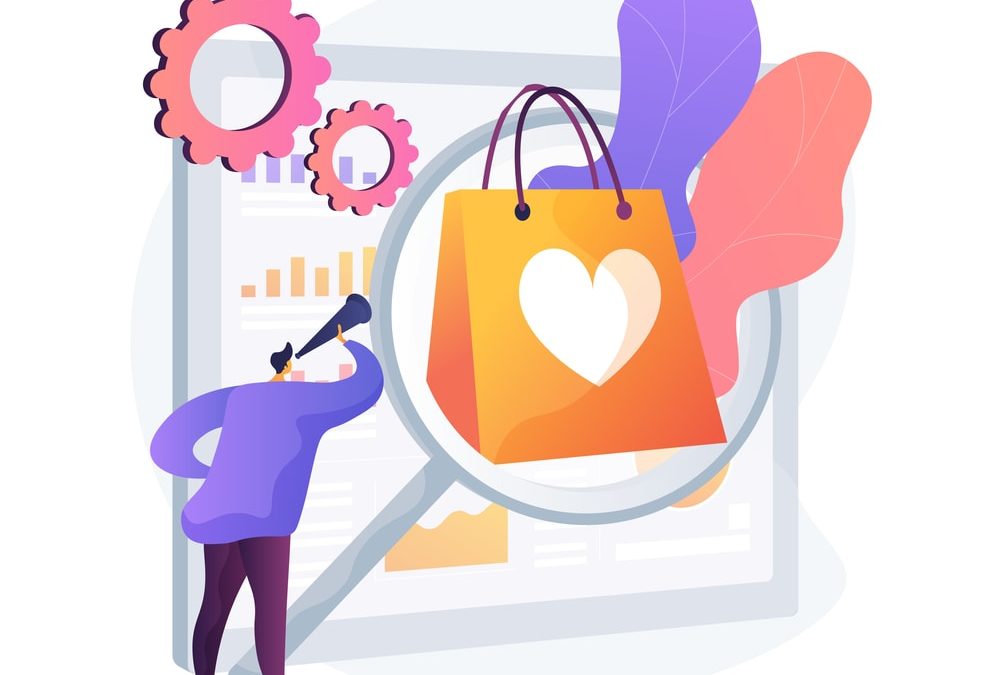If you haven’t yet heard of the term, the very idea of on-demand marketing sounds like science fiction. The typical marketing approach can be perceived as a sales funnel, starting with a large audience and whittling it down to nurture leads and convince them to purchase. On-demand marketing, on the other hand, is more akin to observing a customer’s behavior and predicting the exact point when they are ready to purchase. Being ready to deliver at that exact point is what sets on-demand marketing apart from the traditional approach.
There’s an oft-misunderstood phrase: “The customer is always right.” It was never meant to be taken at face value—a fact that many of its critics often miss—but rather, it was supposed to empower brands to listen to the customer and deliver exactly what they need.
From a macro point of view, this would direct brands to consider new products or services to address customer pain points. It could never be applied to each individual customer because traditional sales channels have strict processes in place to ensure a consistent experience.
What if you could take that idea and apply it to every single customer experience? What if you could actively listen to what each individual customer needs and tailor your sales funnel to their unique situation? That’s what on-demand marketing is proposing.
What is The Potential of On-Demand Marketing?
Consumer demands keep increasing month after month, year after year. Let’s say that you’re buying a pair of glasses through an online retailer. You pick out a style that you think you may like, but since you don’t have the glasses in front of you, you can’t tell what it actually looks like on your face. You don’t know how your friends, family, and coworkers will react to your new purchase. You don’t know how it’ll match your current clothes or any other clothes that you plan to buy.
Imagine if upon selecting the style you want, you could overlay it as a filter on your phone’s selfie camera so you can see exactly how it changes your look. You could then be prompted to post a selfie to social media and create a poll for your friends to vote on. If you do end up purchasing the glasses, you could be alerted to clothes that would match it, based on clothes you already purchased in the past. Or you could even be offered discounts with collaborating brands if you walk into their store while wearing the glasses.
On-demand marketing, at its core, means being able to anticipate consumer needs and create a completely seamless purchasing experience from start to finish and beyond. This requires an enormous amount of consumer data and cross-disciplinary know-how.
Technology and consumer expectations have reached a point where on-demand marketing can become a reality—everyone has a mobile phone, social media allows for collection of vast swathes of data, and collaboration between companies has reached an all-time high. Marketers have realized that no one company can address all the pain points experienced by consumers—and that it benefits everyone to make it easier for consumers to buy at every opportunity.
What’s truly important is that all interactions your customer has with your brand are immediate, valuable, relevant, and easy. And that is no mean feat.
What Can We Do Now?
You may be thinking that a small business would be hard-pressed to offer this kind of experience to its customers. After all, the biggest brands in the world haven’t yet figured out a way to do it. You’re right—there’s going to be a paradigm shift in how consumers interact with brands, and it’ll require a lot of resources to be a part of that technological first wave.
However, you can still begin to implement the ideas behind on-demand marketing if you’re customer-focused and ready to put in some hard work.
Do you want to leverage on-demand marketing and propel your business?
The First Principle: Immediate
The first principle of on-demand marketing is that your customer interactions must be immediate. Nobody appreciates having to wait for service in this era of always-on connectivity. That has a couple of implications:
1. Social media is increasingly important
Over half of the world’s population is on social media — and you have to be where your audience is. You can hardly have a successful digital marketing strategy without utilizing social media. With an increasing number of people using social media to research products, being on the same platform means you just made it even easier for a user to purchase something from your brand.
2. Messaging apps are a huge channel for customer interaction
No matter what business you’re in, you always want to deliver high quality experiences to your audience, users and customers. People are already using messaging apps for school, work, and personal relationships—so it’s simply a natural progression for them to use it to reach out to brands they’re interested in. While it may seem like it would take a huge customer service team to manage a brand’s conversations, chatbots have become sufficiently advanced and easy to use; even a small business can set up a chatbot and use it effectively.
3. Automation software is crucial
Considering that you’ll need to give immediate access to people in order to keep them happy, there are other platforms with built-in automation functionality that can help. For instance, let’s say that you have a SaaS platform that solves a common problem for doctors. You may want to use webinar software that has the “evergreen webinar” function. This means that you can offer a pre-recorded webinar on-demand to your potential customers 24 hours a day, 7 days a week. Using automation in this way will give your prospects a personalized response in an automated way.
One knock-on effect of this first principle is that it allows you to capture data from the customer in the moment—giving you a look at exactly what points of friction they’re experiencing. It’s important that this kind of data doesn’t go to waste.
The Second Principle: Valuable
The customer interaction with your brand must always be valuable. For on-demand marketing, future customers are going to want to do things that they’ve never been able to do before—just as in our example earlier. This is by far the most technologically intensive idea of on-demand marketing, and the one that is most out of reach for smaller businesses.
In an era where customer satisfaction has become all-important, living up to your customer’s expectations (or going even beyond them) in every interaction is the key to implementing this second principle.
This, then, begs the question: what kind of experience are you offering to your customers? What about your brand’s values is unique? To be able to offer something valuable, you first need to know what you’re good at. Delivering on this principle requires you to look inward before looking outward.
Now is the time to implement on-demand marketing to boost your business.
The Third Principle: Relevant
And that leads us to the third principle: The customer interaction with your brand must always be relevant. To do that, knowing your customer’s desire is key. That means the data we mentioned above should be helping you refine exactly what kind of experience you offer. They will expect all data stored about them to be targeted precisely to their needs or used to personalize what they experience.
Do your customers tend to want to learn more about the benefits of your products and services? Then your messaging can open with that, instead of jumping directly to getting people to buy. Perhaps customers are wondering more about compatibility between your products and those of another company—maybe you can use that opportunity for a collaboration.
While you can facilitate learning about these issues with techniques such as the call to action, the bottom line is that your customers are willing to give you all this data for free—so long as they think it will eventually benefit them. They are trusting you with data about their behavior, their preferences, and their challenges, so the least you can do is to make their experience easier.
The Fourth Principle: Easy
If you’ve already implemented the previous three principles of on-demand marketing, then this last principle should be most of the way there. This principle is a result of your efforts to produce immediate, valuable, and relevant customer interactions. When we say that customer interactions should be easy, it means that you’ve already addressed points of friction and there’s only minimal barriers to the customer getting what they want or need.
Now, whether that’s actually making a purchase, getting in touch with a customer service representative, or simply learning more about your brand, you need to be proactive in giving the customer the option that best suits them. Even if you’re primarily focused on B2B sales, being prepared – for example with an estimate template for any work you might be contracted to do – can help you close that gap between making a sale and missing out.
If you already have a powerful marketing funnel then you’re ahead of the game in this regard. If you already know your own strengths and weaknesses and have streamlined your own processes to make customer experiences as seamless as possible, then congratulations: you’ve already got this covered.
As you grow and foster partnerships and collaborations with other brands, then you can look into providing a more cohesive experience even outside your own wheelhouse.
A Final Word About On-Demand Marketing
Entrepreneurs and small business owners should leverage the power of on-demand marketing as well as primary demand advertising. Marketing strategy experts have recently been discussing the importance of implementing on-demand marketing, as emerging technologies are poised to personalize the consumer experience radically – in real time and almost everywhere.
The idea of on-demand marketing leverages both the ubiquitous nature of technology and the increasing willingness of customers to participate. Eventually, customers will expect a cohesive, inviting process for every interaction, causing minimal interruption to their daily lives while providing the maximum value for their time.
While the technology for this may already exist, putting it all together is still a massive challenge that even the biggest brands in the world haven’t fully tackled. But that doesn’t mean your company needs to be left behind. If you adhere to the principles and build your brand with a customer-focused mindset, you can have the know-how and a company culture that is ready to adopt on-demand marketing when it becomes more accessible.
No matter what your approach is going to be in the future, it’s never too late to begin refining and improving your own internal processes. Doing so will be critical in meeting the expectations of future on-demand customers, especially as the concept becomes more widespread. Don’t be afraid to assess, modify, and adapt to the changing needs of your audience. Building a truly customer-focused enterprise will always pay dividends in the end. Good luck!
Growth Hackers is among the best B2B demand generation agencies helping businesses from all over the world grow. There is no fluff with Growth Hackers. We help entrepreneurs and business owners leverage on-demand marketing to increase their sales, generating qualified leads, optimizing their conversion rate gathering and analyzing data analytics, acquiring and retaining users and increasing sales. We go further than brand awareness and exposure. We make sure that the strategies we implement move the needle so your business grow, strive and succeed. If you too want your business to reach new heights, contact Growth Hackers today so we can discuss about your brand and create a custom growth plan for you. You’re just one click away to skyrocket your business.






